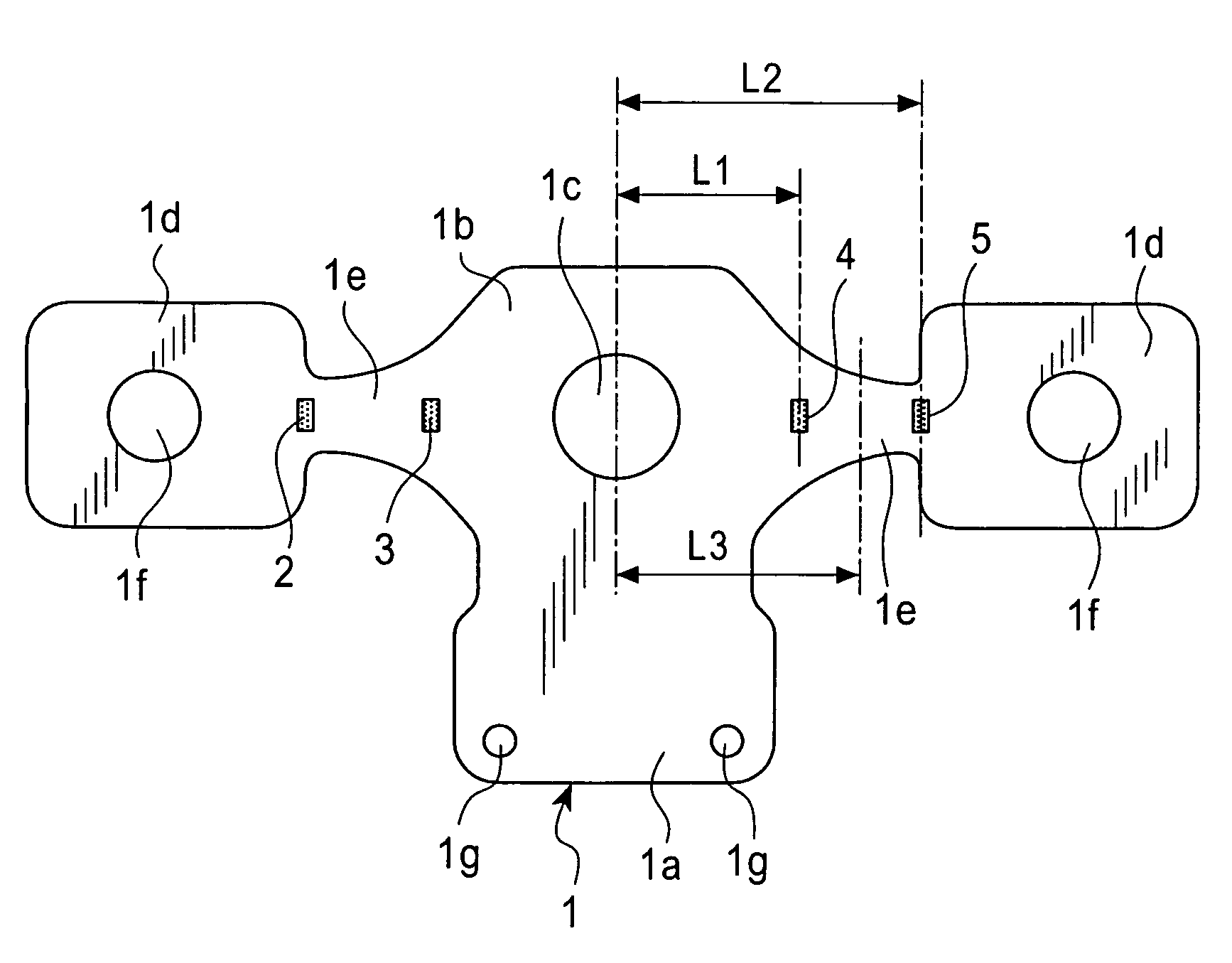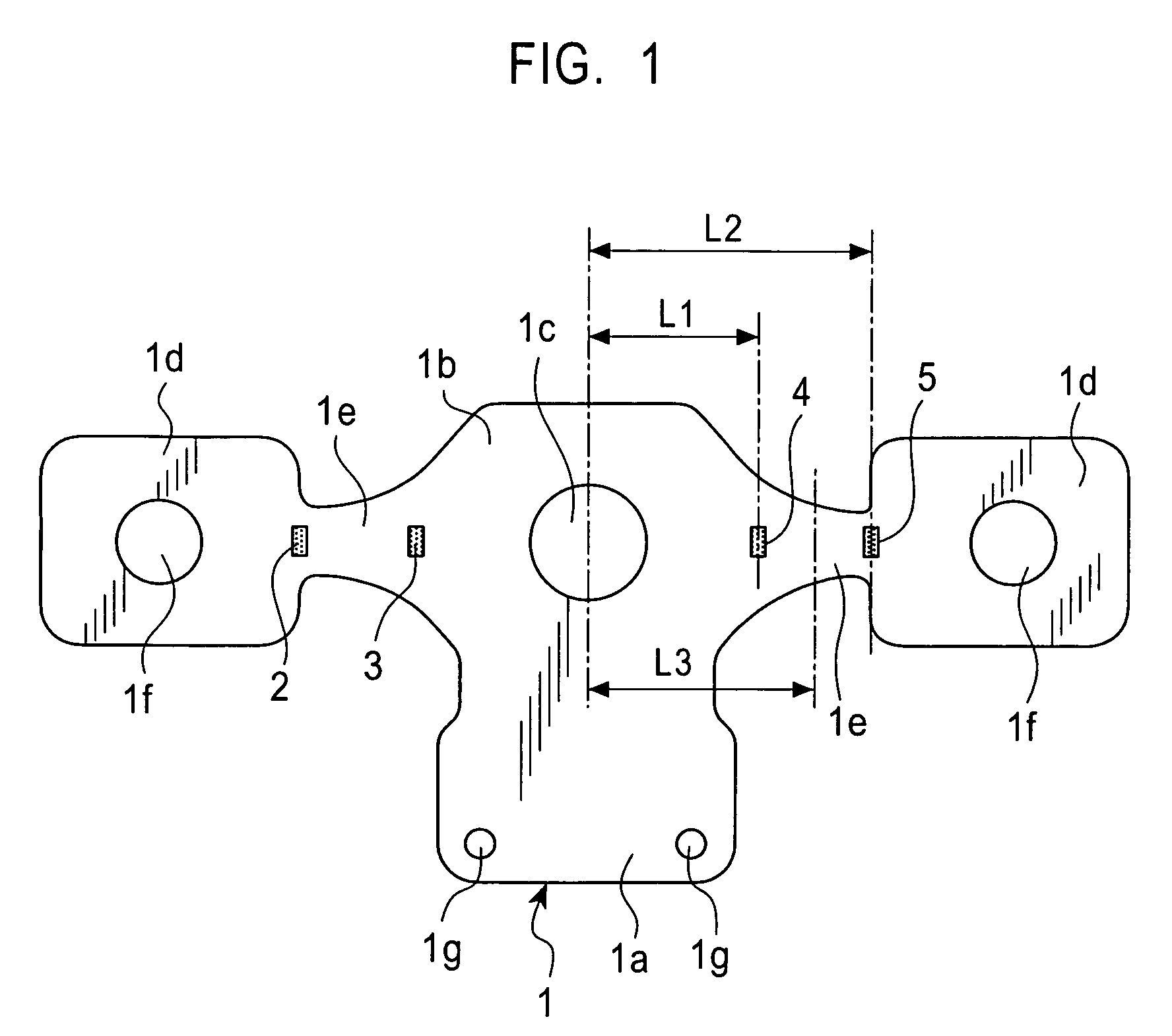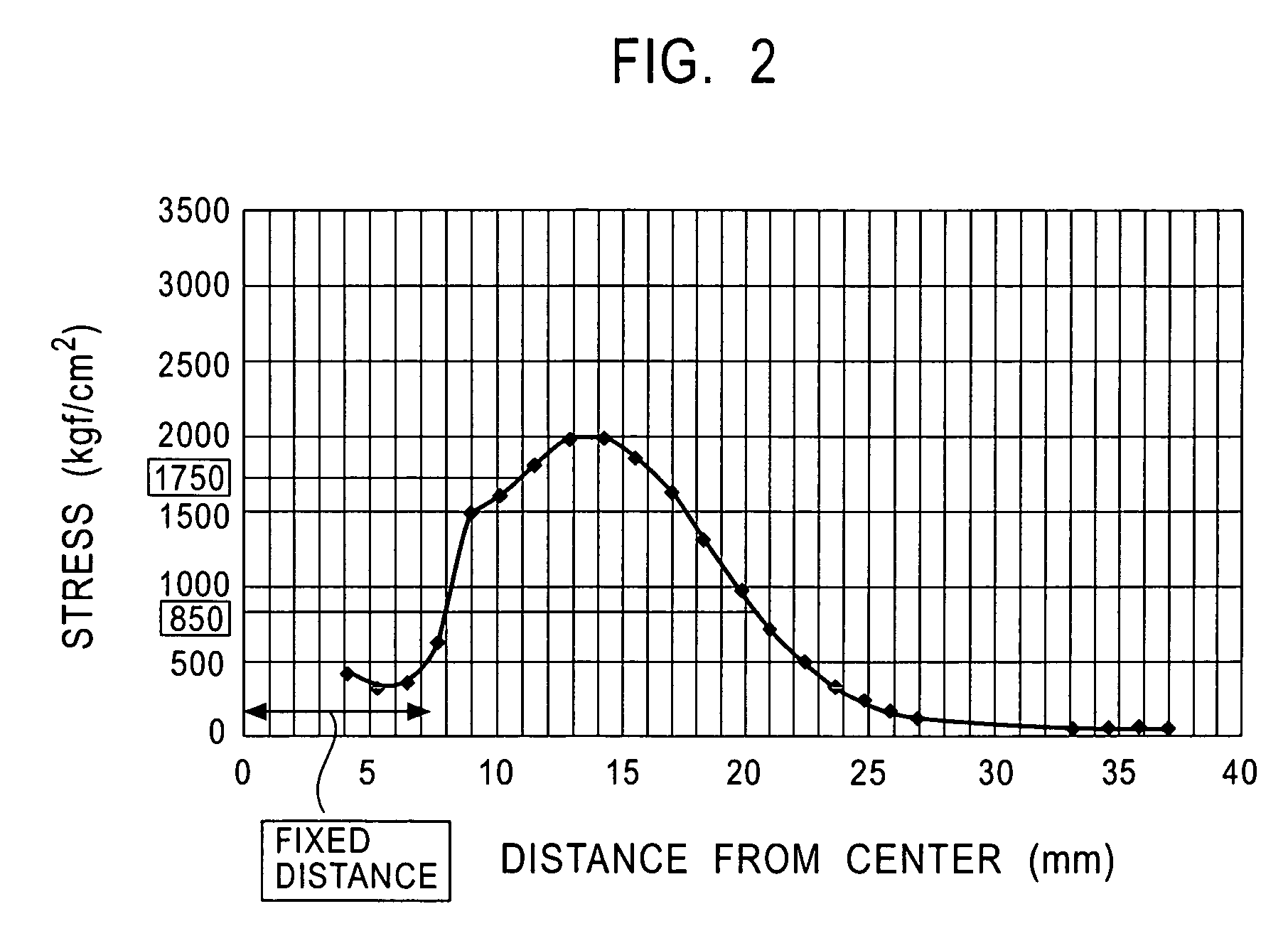Load sensor
a technology of load sensor and load, applied in the direction of instruments, pedestrian/occupant safety arrangements, force/torque/work measurement apparatus, etc., can solve the problem of not being able to achieve the proper detection output, and achieve the effect of reducing detection errors
- Summary
- Abstract
- Description
- Claims
- Application Information
AI Technical Summary
Benefits of technology
Problems solved by technology
Method used
Image
Examples
Embodiment Construction
[0026]An embodiment of a load sensor according to the present invention will now be described with reference to FIGS. 1 to 7. FIG. 1 is a plan view of the load sensor according to the present invention. FIGS. 2 to 4 are diagrams each illustrating a stress distribution of a resilient member 1. Specifically, each of the diagrams is a stress-versus-distance graph from a stationary segment 1b to one of load-receiving segments 1d. In FIG. 2, the cross-sectional area of each of arm segments 1e is substantially uniform from the stationary segment 1b to the corresponding load-receiving segment 1d. In FIG. 3, each of the arm segments 1e symmetrically narrows down from the stationary segment 1b to the corresponding load-receiving segment1d such that the cross-sectional area of the arm segment 1e decreases as it reaches the narrow portion and then increases from the narrow portion to the corresponding load-receiving segment 1d. In FIG. 4, each arm segment 1e is tapered such that the cross-sect...
PUM
| Property | Measurement | Unit |
|---|---|---|
| stress | aaaaa | aaaaa |
| thickness | aaaaa | aaaaa |
| weight | aaaaa | aaaaa |
Abstract
Description
Claims
Application Information
 Login to View More
Login to View More - R&D
- Intellectual Property
- Life Sciences
- Materials
- Tech Scout
- Unparalleled Data Quality
- Higher Quality Content
- 60% Fewer Hallucinations
Browse by: Latest US Patents, China's latest patents, Technical Efficacy Thesaurus, Application Domain, Technology Topic, Popular Technical Reports.
© 2025 PatSnap. All rights reserved.Legal|Privacy policy|Modern Slavery Act Transparency Statement|Sitemap|About US| Contact US: help@patsnap.com



